Spokane String Quartet explores anxieties of centuries past, juxtaposed with world premiere of strings work

Like it or not, we live in a time of anxious uncertainty. It is easy to think of earlier times as being calmer and less unsettled, and to conclude that the art of those times offers a tranquil refuge to readers, viewers and listeners of our unsettled period. If anyone in the audience at Sunday’s performance at the Bing by the Spokane String Quartet of works by Joseph Haydn (1732-1809), Samuel Barber (1897-1957) or, for that matter, by the contemporary Polina Nazaykinskaya (b. 1987) was seeking such a refuge, however, they were bound to be disappointed.
Haydn’s String Quartet in G minor Op. 20 No. 3, which opened the program, was composed in 1772, when fistfuls of disruptive ideas were battering down long-held assumptions of European culture, ideas that would soon lead to revolutions in the English colonies and in France, with the consequent emergence of a fearful new form of government: democracy. Accordingly, the music of the time took on darker hues as it shifted from the positivism of the Enlightenment to the turbulent waters of Romanticism, with its explorations of the role of passion and anxiety in the human psyche.
These anxieties were plainly heard in the rendition of Haydn’s G minor Quartet by the Spokane String Quartet, comprised of violinists Mateusz Wolski and Amanda Howard-Phillips and, violist Jeanette Wee-Yang and cellist Helen Byrne. They did nothing to smooth over the sudden explosions of dissonance, the melodic fragments that begin promisingly in the major, only to sour into the minor before vanishing altogether. Rather, they allowed Haydn’s doubts and anxieties to speak for themselves.
They took full advantage of the greater role Haydn assigns to the lower strings in the Op. 20 quartets, compared with the 30 quartets that preceded it, in which they do little more than accompany and reinforce the first violin. Especially in the third movement, which is really the expressive center of the work, we heard musical leadership pass to Byrne’s poignant cello and Wee-Yang’s boundlessly colorful viola, and then to Howard-Phillip’s deep-toned violin, while Wolski accompanied.
To anyone familiar with the chamber music repertoire, it was hard not to hear in the quartet’s dramatic reading pre-echoes of two later works by Haydn’s admiring younger colleague, Wolfgang Amadeus Mozart. Mozart cast both his greatest work of chamber music, the String Quintet No. 4 K. 515 (1787), and his greatest symphony, No. 40 K. 550 (1788), in the key of G minor.
To begin the second half of the concert, Howard-Phillips explained that we were about to hear the world premiere of Nazaykinskaya’s arrangement for string quartet of the Adagio from her Symphony for Strings (2024). It seems that Howard-Phillips became acquainted with Nazaykinskaya at the international conducting workshop held earlier this year in Spokane by James Lowe and Johannes Schlaefli. She found Nazaykinskaya’s Symphony for Strings online and called to tell her how much she admired the work. By the end of that call, the composer committed to create the arrangement we heard on Sunday. It is difficult to imagine that a work as deeply moving and superbly crafted as this will not be taken up long into the foreseeable future by quartets throughout the world.
Though different in structure from Haydn Op. 20 No. 3, this Adagio also expresses, in the composer’s words, an “inner turmoil,” expressed by having “thematic elements intertwine, creating an emotional juxtaposition that mirrors the internal conflicts we all grapple with.” As distinct from the sharp contrasts of voices in the Haydn, Nazaykinskaya asks the quartet to blend the four voices in the manner of a Slavic choir, within which soloistic passages are evenly distributed among the parts. There are no changes of meter or tempo. Rather, it portrays a gradual increase in tension and emotional complexity, as a single, seemingly unending melodic line evolves throughout the work, reaching several points of climax and relaxation before resolving into a radiant major chord, like the sun emerging after a storm at sea.
Both the Haydn Quartet and the Nazaykinskaya Adagio are well-integrated works of fine quality throughout.
If the three movements of Samuel Barber’s String Quartet of 1938 met that description, they would undoubtedly be performed together first and third movements, while very skillfully crafted, suggest the work of an able and industrious student of composition, and are almost never heard. The second movement, on the other hand, either as played by string quartet or by a string orchestra under the title Adagio for Strings is not only Barber’s most famous composition, but one of the most widely played works of music by any American composer of any style or era. It is our Anthem of Grief, the poignant, cascading passages of which have accompanied multitudes to their graves. While the first and third movements have interesting things to say, the second is simply a masterpiece.
The Spokane String Quartet wisely chose not to overplay the manifold beauties of the piece, but to let them unfold themselves before us. Rather than pressing down on the bow to produce thrilling billows of tone, Wolski rather played more softly the more intensely emotional the music became. As a result, one found oneself holding one’s breath longer than seemed possible.
Following the playing of the Haydn Quartet, Byrne stepped to the microphone to announce an addition to the program. It seems the group found the original program to be unbalanced, and so decided to move the Nazaykinskaya to the second half, and to close the first with a piece in honor of St. Patrick’s Day: an arrangement of two cheerful British jigs entitled “Molly by the Shore,” by the iconoclastic Australian composer Percy Grainger (1882-1961). It is a joyful, rousing piece, which provided an opportunity that some in the audience may have welcomed to break for a moment from the anxious uncertainty that underlay the rest of the program, and that awaited them when the music ended.